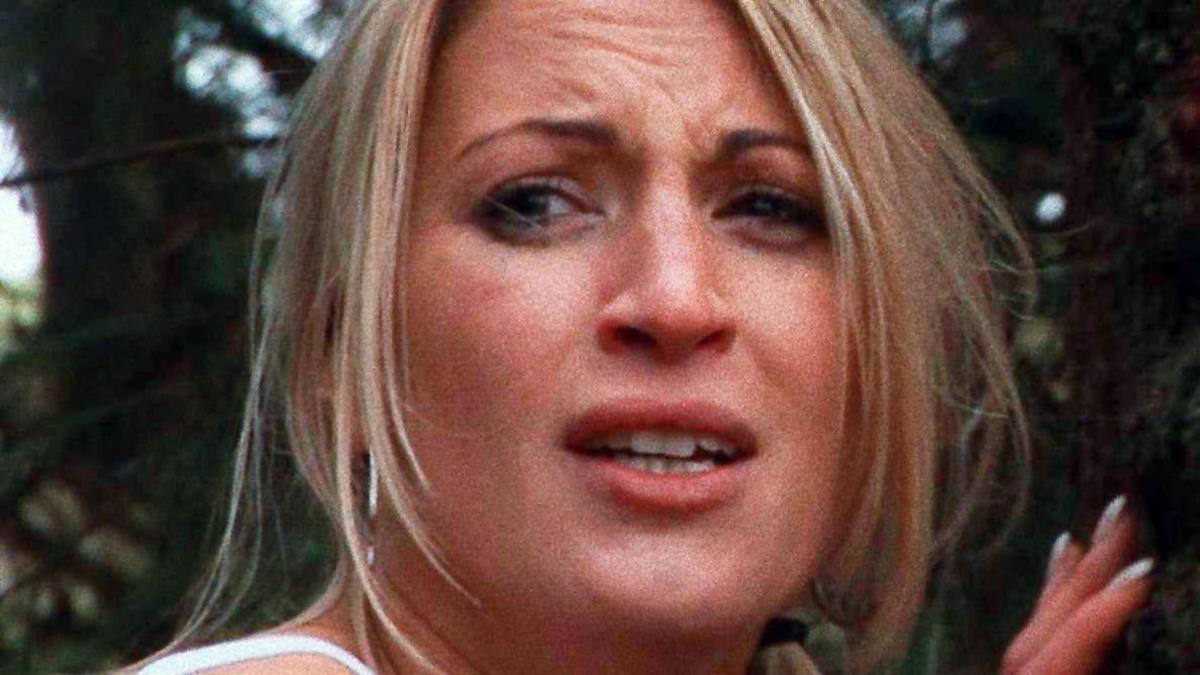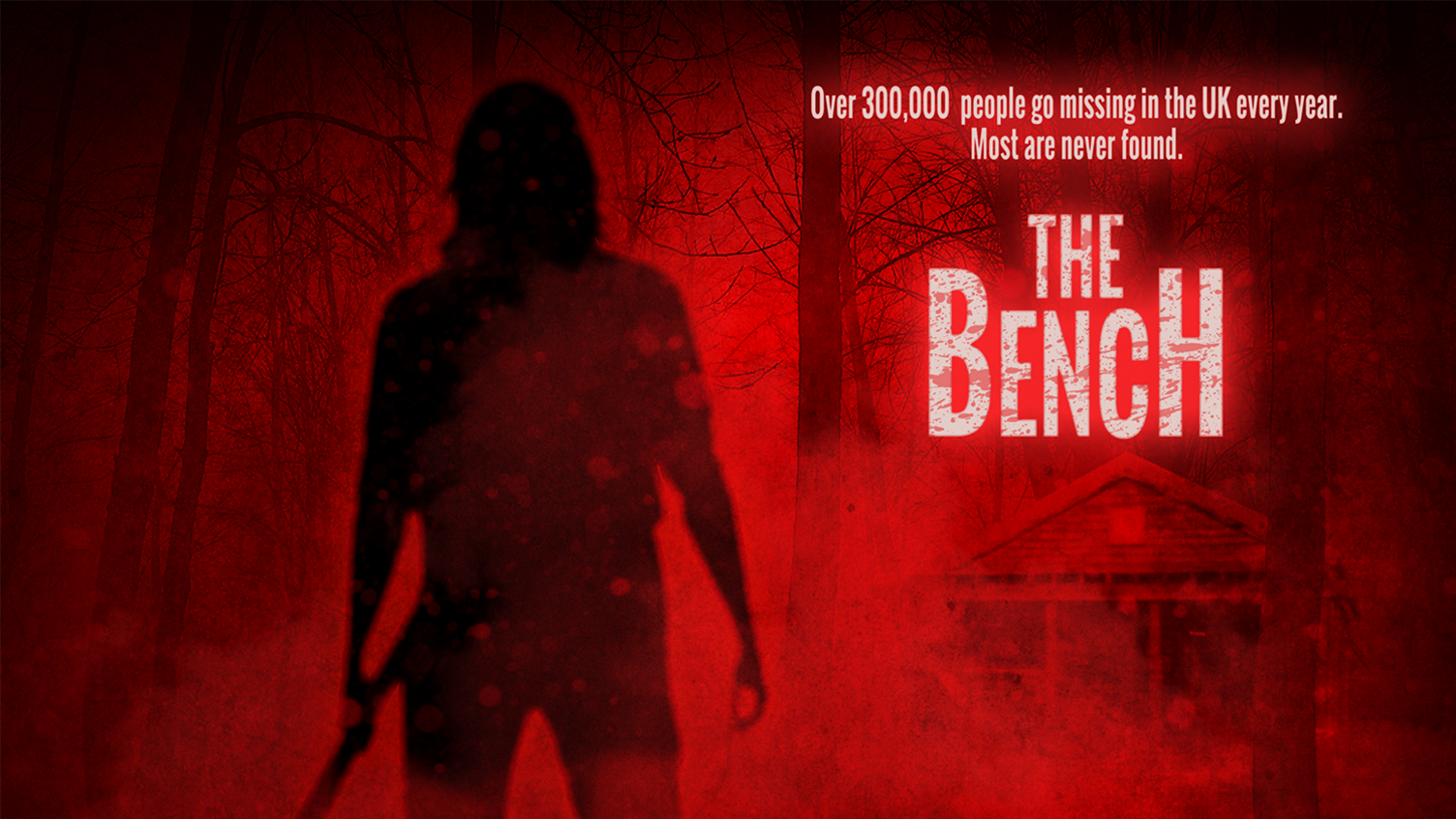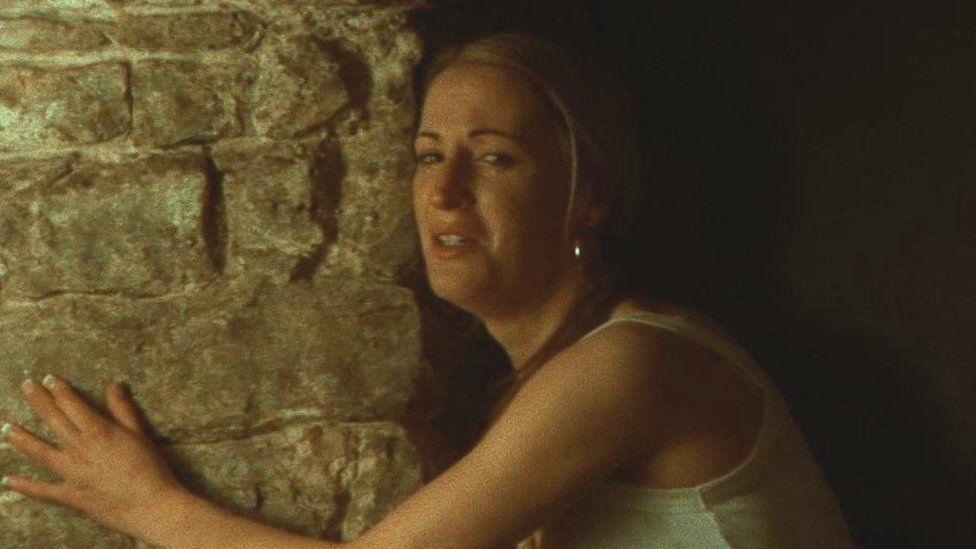The Scottish horror film 17 years in the making

Lauren (Ilaria Nardini) discovers there's something evil out there
- Published
A Scottish horror film has finally been released - 17 years after filming first got under way.
The Bench is a grisly slasher where a group of friends take a trip to a remote cabin in Renfrewshire, only to disappear one by one.
However, the production was struck by a host of difficulties, from badly misjudging the Scottish weather's suitability for filming to money running out half way through.
Writer and director Sean Wilkie told BBC Scotland News that he was a mixture of being "pleased, nervous and relieved" now that The Bench can be seen by the public.
The Coatbridge native had worked on short films before deciding to tackle a full-length horror.
He was inspired by some of his favourites from the genre such as Halloween, The Hills Have Eyes and Tobe Hooper's dread-inducing tale of unwitting teenagers encountering a cannibal family, The Texas Chainsaw Massacre.

Filming began in Lochwinnoch in 2007, using a cabin owned by friends of the film's director of photography.
For indoor filming, the Caves venue in Edinburgh was used, with Drumpellier Country Park used for occasional outdoor shots.
The film has a cast that includes Two Doors Down star Joy McAvoy and Matt McClure from American horror show Penny Dreadful.
"The first two weeks on location were fine but we couldn’t keep that up," reflects Sean.
"I wish we’d have someone following us all the way though, as it would have made some documentary. Due to the weather and other things we couldn’t finish filming as planned, so we were coming back on odd weekends here and there to complete it."

The trip to the countryside goes badly wrong for the group of friends
That was only the start of the film's issues. Initial financing had fallen through at an early stage, but Sean decided to "charge ahead" anyway, something he admits now was "probably a mistake."
The film's original editor departed, so Sean took on that role as well, and by the time reshoots were needed many of the cast and crew were working on other projects.
"I had to gather the footage together and do the editing, and then I realised what we were missing", he says.
"So I was having to get some of the cast to fly back when they could [for reshoots] and drag them back to the cabin in Lochwinnoch. Then we’d go and there would be a blizzard, so we had to abandon filming anyway and try again later.
"I was probably quite naïve. I’d watched a lot of American horror films when I was writing the script, like the Texas Chainsaw Massacre where it’s set in these roasting locations - completely forgetting that we would be filming in Scotland and that warm temperatures were not going to happen."
That process also created continuity issues, as Sean tried to juggle cast members having changed their hairstyles between their original scenes and the added filming.

The Texas Chainsaw Massacre was cited by Sean as an influence
With money having run out by the time filming was finally completed in about 2011, Sean then had to rely on favours for post-production and scoring the film. That meant those factors took even more years to complete.
It was only around 2016 that The Bench was mostly complete.
"By the time that was all finished, I had no energy left at all, so it just sat in a drawer," says Sean, who now teaches animation and filmmaking, as well as working on scripts as a freelance writer.
"It took a lot out of a lot of friendships and I was paying off money to do with it for a while, so I wanted nothing to do with it."
However, like any self-respecting slasher villain, the film rose up from the dead.
An approach by Ryan Hendrick - the director of Scottish set festive romance Lost At Christmas - led to the film being dusted down.
"He said he thought it could do quite well for a small distribution company he’d set up," Sean says. "There were a few problems with continuity due to actors having different hair between the first shooting and the reshoots, but he’s cut around that cleverly, and I was really impressed by the work he’s done."

Lauren (Ilaria Nardini) discovers the Bench
Now The Bench is streaming on Amazon Prime, and Sean feels it has sparked a desire to get back behind the camera.
"I’ve started to get ideas again," he laughs.
"I’ve mostly been writing, but we showed it at Cineworld recently and the audience seemed to really like it. Shooting in 2007 has worked out for us as it gave us a production value we could never have afforded now.
"It’s almost like a period piece!"